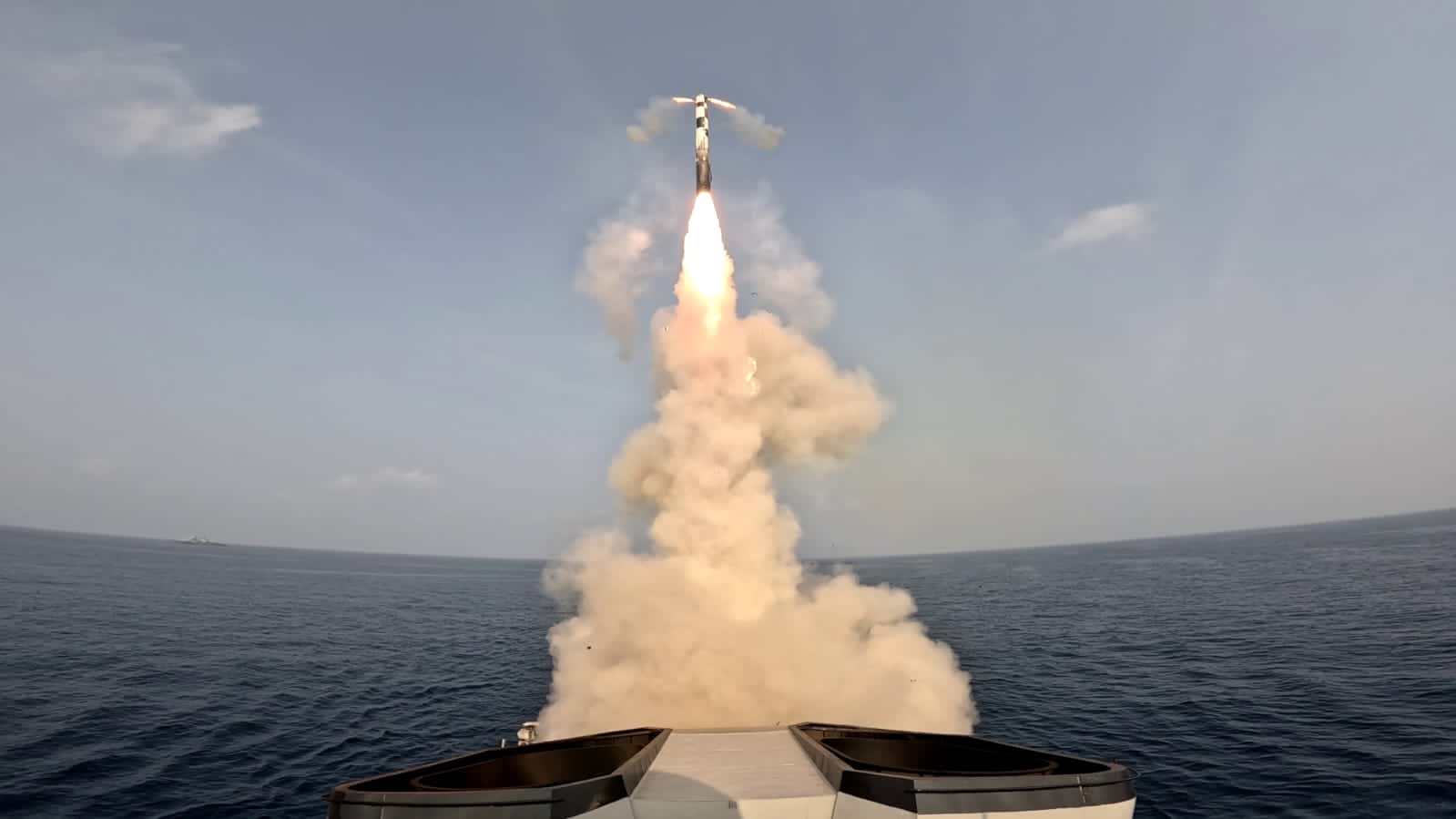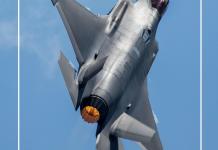Underwater warfare is going to get more competitive in the Indian Ocean Region. Days after Pakistan laid a keel for an AIP (Air Independent Propulsion) submarine, India has announced to test a 500 km range submarine-launched cruise missile in the coming days.
India’s SLCM program is driven by strategic factors like China’s growing naval presence in the Indian Ocean and Pakistan’s advancements in missile technology.
SLCMs would add a survivable sea-based element to bolster India’s land-based rocket force, which the country has envisaged. First articulated by former Chief of Defense Staff General Bipin Rawat, the establishment of the Indian Rocket Force hinges on getting the theatre commands running.
These missiles will be deployed on the submarines to be constructed under Project 75I, for which German ThyssenKrupp AG and Spanish Navantia are competing. India is planning to eventually increase the range of its SLCM to 800 kilometers, which will cover a vast swathe of China within its range, including cities like Shanghai, Hangzhou, Wenzhou, Fuzhou, and Xiamen.
The SLCMs are part of India’s strategic defense capabilities that eventually want to build a rocket force. A trial of the SLCM was conducted in February 2023, during which the SLCM achieved its objectives within a range of 402 kilometers.
There are two variants – Land Attack Cruise Missile (LACM) and Anti-Ship Cruise Missile (ASCM) intended for targeting naval vessels.
India has been working towards non-contact warfighting capability with its homegrown SLCMs and short and medium-range ballistic missiles, just like PLA’s Rocket Force (PLARF), which controls Beijing’s arsenal of land-based ballistic missiles-both nuclear and conventional. The PLARF has 40 brigades.
India is developing long-range land attack cruise missiles with an impressive range of 1500 kilometers. Indian domestic industries such as Larsen and Toubro, Godrej, and Sameer are partnering with the country’s domestic Defense Research and Development Organisation (DRDO).
SLCMs are primarily designed for deployment on submarines and have a relatively shorter range compared to Intercontinental Ballistic Missiles (ICBMs). SLCMs are used for precision strikes against land-based targets or naval assets, while ICBMs are part of the country’s nuclear deterrent. SLCMs are launched from submarines, which can operate stealthily underwater, making them less susceptible to detection and pre-emptive strikes.
SLCMs follow a low-altitude trajectory during their flight. They fly close to the surface, avoiding detection by radar systems. They can be launched relatively quickly from submarines, providing a rapid response capability. Successfully integrating SLCMs onto submarines like the Kalvari-class SSKs and the nuclear-powered Arihant ballistic missile submarines (SSBNs) is crucial.
The SLCMs will be tested first on the Russian-origin Sindhughosh (kilo class) submarines as planned.
The DRDO has also completed the development of the Pralay ballistic missiles with a strike range from 150-500 km. The long-range land-attack cruise missiles and SLCMs with a 1000 km range will be ready for production within a couple of years.
Coastal batteries armed with the Brahmos anti-ship cruise missile (ASCM) may feature in the Indian Rocket Force along with land-based long-range ASCMs derived from the subsonic Nirbhay cruise missile.
These systems are likely to feature heavily in any future anti-access/area denial architecture set up by India in the Andaman and Nicobar Islands.
India plans to keep the IRF and the Strategic Forces Command (SFC), which handles the country’s nuclear arsenal, as separate entities.
So, the SFC will continue to be in charge of the nuclear-capable Prithvi-II (350 km range), Shaurya (750 km), Agni-1 (700 km), Agni-2 (2,000 km), agni 3 (3,000 km), Agni 4 (4000 km) and Agni-5 (over 5000 km) ballistic missiles as well as nuclear-powered submarines armed with nuclear-tipped missiles and fighter jets capable of dropping nuclear gravity bombs.
There is a stark asymmetry between China’s PLA Rocket Force and India’s fledgling efforts. China can inflict greater damage on India by firing a barrage of conventional missiles, whereas New Delhi’s response options are limited in comparison. Following a lengthy standoff with China since 2020, New Delhi is working to close the capability gap with Beijing.
India’s former Army Chief General Manoj Mukund Naravane, while underscoring the lessons learned from the Azerbaijan and Armenia conflict in August 2021 said: “One key lesson that emerged was that the concentration of aircraft, ships, and other forces to reinforce each other’s combat power made them sitting ducks. The tendency to converge to fight makes you vulnerable to the precision fires available to the adversary. There is, therefore, a need to aggregate fires rather than platforms.”
India’s SLCM Against Pakistan’s Babur
In 2017, Pakistan test-fired the Babur III SLCM from a mobile underwater platform in the Indian Ocean. The missile is said to have a range of 450 kilometers with underwater-controlled propulsion and advanced guidance and navigation.
Pakistan’s successful test of the Babur III SLCM brings it closer to achieving a functional nuclear triad. Babur III provides Pakistan with a credible sea-based second-strike capability, augmenting its existing deterrence.
The Babur can carry a 450-kilogram unitary or cluster high-explosive warhead or a 10- or 35-kiloton nuclear warhead up to 350-700 kilometers. The missile features a terrain contour-matching (TERCOM) guidance system, with upgraded variants having digital scene matching (DSMAC) and satellite guidance.
Pakistan’s successful development of SLCMs complicates India’s strategic calculations. And India’s SLCM seeks to rebalance the power equation in the region.

India Levels Up Underwater Game
China’s submarine force makes even the world powers apprehensive of its sheer numbers. Its submerged force has 76 platforms – comprising 8 SSBNs (ballistic missile submarines), 13 SSNs (nuclear-powered attack submarines), and 55 SSKs (diesel-electric submarines).
Beijing makes no bones about its intentions to dominate the Indo-Pacific and, more specifically, the Indian Ocean Region. India’s submarine capability remains woefully short, with only 16 conventional and one SSBN (INS Arihant). One SSN Akula class submarine on lease from Russia is yet to arrive.
A general naval rule-of-thumb is that for every vessel operating, two more are required – one preparing for deployment and one standing down from recent operations. The numbers are needed to keep up with the maintenance and crew’s rest and training schedule.
During peacetime, only one-third of the fleet is expected to be deployed. More vessels can be deployed in wartime, but it is still prudent to assess the availability realistically. The Chinese Navy is not just forging ahead with the induction of submarines in its fleet but also equipping India’s neighbor Pakistan with state-of-the-art technology.
The coming of AIP technology to the Indian Navy will put its fleet in a better position than Pakistan, with all three of its French Agosta-90B (PNS Khalid, Saad, and Hamza) powered by AIPs.
Pakistan is also expected to receive eight 39 A Yuan-class AIP-powered submarines by the end of 2023 under a US$5 billion deal with China.
- Ritu Sharma has been a journalist for over a decade, writing on defense, foreign affairs, and nuclear technology.
- She can be reached at ritu.sharma (at) mail.com
- Follow EurAsian Times on Google News




